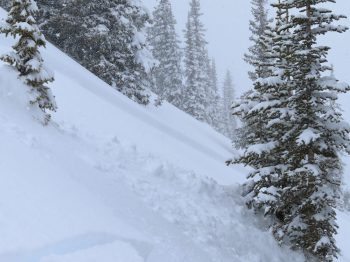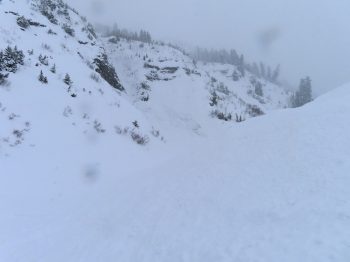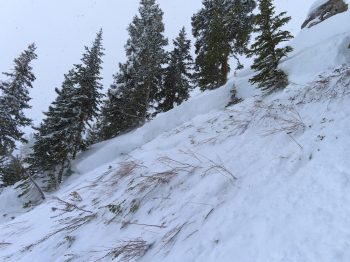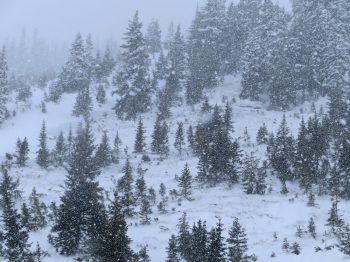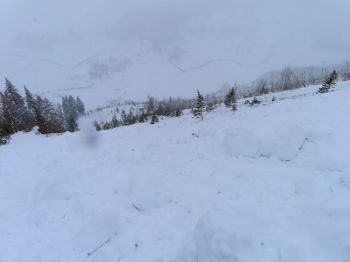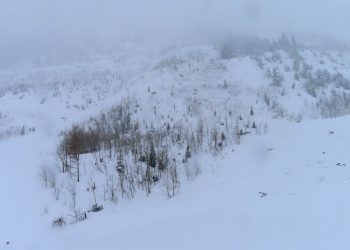Location: Crested Butte Area
Date of Observation: 03/19/2020
Name: Evan Ross
Subject: Climax Storm Slabs
Aspect: North East, East
Elevation: 9,000-11,300
Weather: Calm wind with a couple strong gusts during our short stay at 11,000ft. We headed out after the peak precipitation in the morning, so S1 throughout our tour.
Snowpack: Let’s start small to large. We struggled to get out of easterly tilted slopes in this generally NE facing terrain. Where there was a crust at the old snow surface, the storm slab avalanche problem was reactive on 40+ degree terrain. 30-degree terrain would produce some cracking but wasn’t steep enough to get things moving unless the slope was unsupported. These slabs broke below skis and didn’t propagate very wide. They never pulled down from above. Initiation was at or just above the crust. More northerly facing slopes that didn’t have the crust at the old snow surface were more stubborn to trigger and didn’t run as well on the softer bed surface. HST and crown height was in the 25 to 30cm range. These avalanches were all D1 in size until reaching near treeline start zones. A couple of natural D1’s were also observed.
Getting up to the 11,000ft elevation and into steep NTL start zones, terrain avoidance was obvious given the instabilities found at lower elevations. A simple ski cut produced a wider propagating Storm Slab with a crown in the range of 30 to 40cm range. This crown didn’t propagate horizontally through the terrain, but in a steep downslope frown that was difficult to see how far across the slope it went. Debris from that avalanche were later observed 2,000ft below. This is perfect terrain for producing long-running avalanches.
We worked our way down on ribs in the terrain where you could shred pow above where the small Storm Slabs would initiate. Given the consisted and steep slope angels of this terrain features, the small slabs accumulated mass and kept running to near valley bottom. This terrain is also one of those places to find some of the worst-case avalanche problems in the CBAC FX Area. We found just that when a small Storm Slab stepped down and triggered a larger Persistent Slab failing at the ground in a shallow weak snowpack. That avalanche stepped down on the 3 rollers in the terrain it passed through. Each added mass and produced a D2.5 avalanche by the time it got close to the valley bottom. I don’t think we could have human triggered one of these deeper Persistent Slab Avalanches, and the bigger mass of an avalanche was needed to start gouging things out.
- The biggest and widest propagating Storm Slab that initiated near 11,000ft and ran for 2,000ft through steep terrain.
- The debris of the largest storm slab 2,000ft below.
- A small Storm Slab stepped down into this deeper Persistent Slab
- Another view near where a Storm Slab stepped down into a deeper Persistent Slab
- PSa running through the 2nd bench
- PSa running through a 3rd bench.




